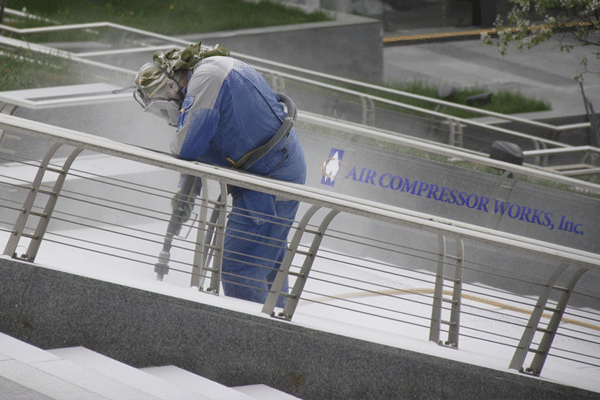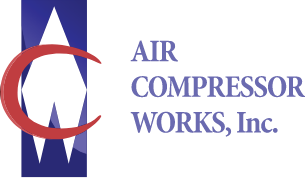Air Compressor Works
Post
Air Flow Through an Orifice
October 26, 2021

One of the tools on our website is the Compressed Air Flow Through Orifice Calculator.
It’s basically calculates how much air can flow through a hole at different pressures, hole sizes, and altitudes. You can use this calculator to tell you the cfm needed for any application where compressed air blows through a hole onto something, or how much cfm that leak is costing you. There are thousands of applications that this applies to.
Leaks
Leaks in a compressed air system can increase your electric bill, maintenance cost, and wear and tear on your system. If you just have a tiny 3/32″ hole, it will leak approximately 17 cfm with the pressure is set at 125 psi. That’s roughly 5 hp of compressor just to keep up with the leak. At a 60 hour work week, that’s around $1200 in just electrical cost. In larger systems, it not uncommon to have several of these leaks.
This tool gives you an idea of how much air is coming out of your leak. The lower the pressure, the less cfm you lose. This is a great example of how turning down your system pressure can save you money.
Application Examples:
Abrasive Blasting
Abrasive blasting is sandblasting, bead blasting, soda blasting, and other media blasting applications. Blasting is just a leak, and the size of the leak is the bore of the blasting nozzle. Many compressed air users waste tons of air and media by using too much pressure, or nozzles that are too big.
Pressure:
1/8″ bore at 125 psi = approx. 29 cfm
1/8″ bore at 90 psi = approx. 21 cfm
The majority of sandblasting applications need 90 psi or less; some you can go as low as 40 psi. It all depends what you’re blasting and the media. If you could blast at 40 psi, you could save roughly 19 cfm.
1/8″ bore at 40 psi = approx. 10 cfm
Bore size:
Another way to reduce cfm needed is to reduce the bore size (reduce the leak.)
3/32″ bore at 125 psi = approx. 17 cfm
Saving about 12 cfm compared to the 1/8″ bore. Now is we reduced the pressure down to 90 psi:
3/32″ bore at 90 psi = approx. 12 cfm
Keep in mind, that as the nozzles get used, they get worn down; making the hole bigger. If you’re compressor is running more than normal, or can’t keep up with demand, it may be time to get new nozzles.
Reducing the pressure and bore size also reduces the amount of media used.
Cleaning
In plants, personnel use compressed air for cleaning. Blowing dust off machines, cleaning radiators, cleaning themselves, etc… Almost every car wash uses a compressed air for cleaning and detailing as well.
We’ve come across applications where it’s just an open hose hooked into the air system. Estimating using the tool:
3/8″ hose at 125 psi = approx. 258 psi
That’s a ton of air! Compressed air needs to be regulated, blowguns need to be used. Regulating down to about 30 psi and using a blowgun:
1/5″ blowgun at 30 psi = approx. 18 psi
Huge difference! However, some applications require larger blow guns and more air pressure; it would still be less cfm than an open hose using unregulated air.
Contact Us
Contact Us
Palm beach:
1956 W 9th St
Riviera Beach, FL 33404
Monday – Friday 7:30 AM - 4:30 PM
Map and Directions
Miami:
7292 NW 25th St
Doral, FL 33122
Monday – Friday 7:30 AM - 4:30 PM
Map and Directions
Phone Number:
Areas We Serve
- Miami
- Fort Lauderdale
- Hollywood
- Boca Raton
- Stuart
- Vero Beach
- Delray Beach
- West Palm Beach
- Homestead
- Key West
- Fort Pierce





